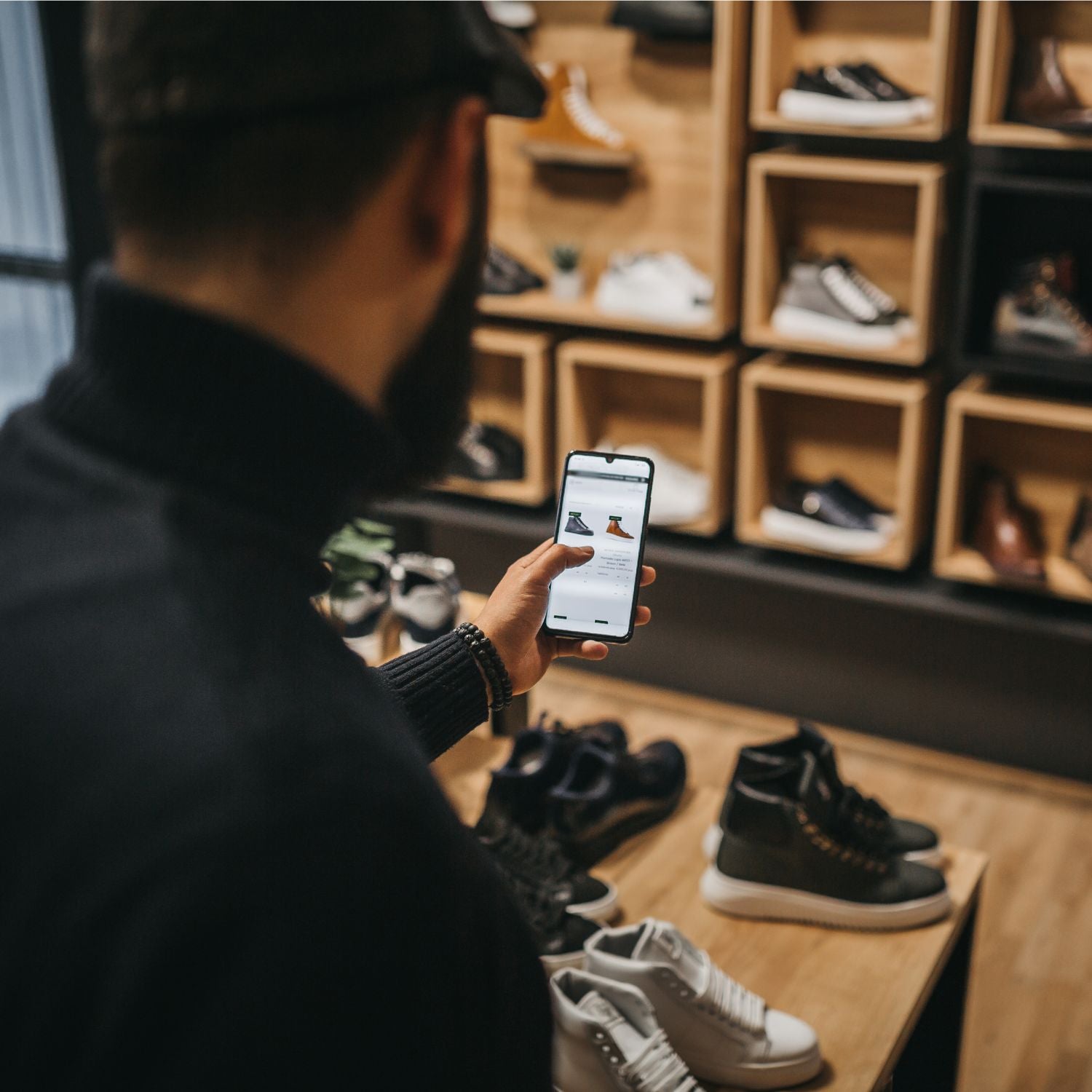If you’ve ever worked in outdoor retail, you are probably all too familiar with a particular customer. They come in, use up your time and expertise to gain product knowledge and find the proper fit, subtly (or not so subtly) take a picture of the thing they want, thank you for your time, and walk out. Your customer, whom you guided along a journey, turns around and buys online, because they found a better price, a different color, or a bigger size.
The cost of spending valuable time and energy on customers, only to have them walk away, is measurable and meaningful. “It happened the other day, a customer came in, went through and tried on all these shoes for 45 minutes, and then I saw her online shopping while I was serving her,” said Joe Ieremia, owner of Sitka Work & Rugged Gear in Sitka, Alaska. Ieremia estimates he and his sales staff lose 10 to 15 hours per week to non-paying customers, or 480 to 720 hours a year. In dollars, he estimates that time adds up to a loss of between $1,600 and $2,000 per week, or about $59,000 to $99,000 per year.
If you’re a retailer faced with similar problems, here are some tips for making money even on those customers who want your time and expertise for free, while continuing to foster community and a welcoming feeling at your shop.
Solution 1: Charge Customers for Staff Knowledge
One solution—the simplest, but also the boldest—is to stop giving out information for free.
Scott Conrad has owned a running shop called Runners Soul in Kennewick, Washington, for over a decade. “I don’t know the right strategy for how you could word it on the door, but I’d love to get the message across to customers that our time is money,” Conrad said. “I’ve thought of creating a policy that if we spend time getting you properly fitted and you don’t buy a shoe, it costs you $10.”
It’s not an unheard-of strategy. In the ski industry, boot fitting is a well-known service that customers willingly pay for. Customizing boots to fit precisely puts customers at ease about how they’ll perform, which provides some justification for charging for the information.
Matt Lyall, a ski boot fitter for Edge & Spoke in Redmond, Washington, believes that having clear answers to common customer problems is the key to charging people for staff knowledge. “People actually want a solution; they want equipment that will work,” Lyall said. “If you aren’t solving a problem for the customer, they will take the info and run, but if you are, they might be willing to pay for the information.”
It’s a risky strategy, but perhaps supported by psychology. Some research suggests that customers perceive pricier goods and services to be of higher quality. Offering your expert knowledge for a fee might be a way to signal to shoppers that, of all the buying options they have, you’re the most trustworthy.
Solution 2: Offer Rent-to-Buy Programs
MTN Gear, a shop in the university district of Seattle, has come up with its own answer to the problem of customers who aren’t ready to make a big spend on the spot, but still want to engage with staff. MTN Gear’s unique retail model encourages customers to walk out of the store without buying anything—so long as they rent it for a much lower price instead.
While many shops rent out hardgoods like skis or mountain bikes, MTN Gear takes the concept a step further by renting out expensive apparel with the option of buying it after the trial period. If a customer chooses not to buy, the item will be rented out again or sold as a used item. Even if the shop isn’t selling full priced goods on each transaction, it’s building return customers and keeping a different kind of revenue stream alive.
“Our model is based on rental in a nontraditional sense,” said Chisholm Jones, the owner of MTN Gear. “You have to be patient and do smaller transactions, but you’re creating a community-based shopping style and people will come back over and over. You get different customer behavior with this method.”
Jones sees this model resonating more as environmentally conscious shoppers are driving changes in retail. “Consumers today are very invested in being responsible,” he said. “This kind of model is attractive to them.”
Solution 3: Offer Gear Consultations
Trevor Deighton is a guide for Exum Mountain Guides in Wyoming. He offers a service for outdoor enthusiasts through his company, Outdoor Equipment Consultants, in which he carefully curates the right gear for any upcoming trip. At $125 for a one-hour consultation, he ensures his customers acquire the right gear for each activity, shares valuable information about what to expect on specific climbing routes, and offers tips on trip planning.
He recommends outdoor retailers adopt a similar type of consultation service for their shops.
“Have people bring in their gear list to check their gear and then give your opinion,” he said. This will train customers to see your shop as a place where information costs money. It will also help build community, which may discourage shoppers from using your staff as a source of free information.
“If customers see your shop as a hub of the outdoor community, with knowledgeable sales staff providing great advice, they will go out of their way to support you,” said Jerry Casson, a buyer at Ascent Outdoors in Seattle, Washington. “They’ll choose you as their primary shop.”


